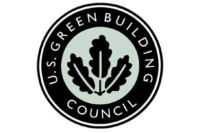USGBC Top 10 Countries for LEED Green Building

The U.S. Green Building Council (USGBC) has released its international rankings of the Top 10 Countries for LEED.
The Top 10 list highlights countries outside of the U.S. that are making significant strides in sustainable building design, construction and transformation, illustrating the ever-growing international demand for LEED green buildings. The announcement comes at a time of increased international focus on climate change mitigation in the lead up to the United Nations’ COP21 climate negotiations this December.
“International demand has grown steadily for tools supporting sustainable economic growth, and it has become increasingly clear that we are reaching a tipping point around environmental sustainability," said Rick Fedrizzi, CEO and founding chair of USGBC. "It is now impossible to view social and economic development as separate issues from a robust sustainability agenda. The global success of LEED in these countries is a sign that international business leaders and policy makers recognize that a commitment to transforming the built environment is crucial to addressing major environmental challenges. The countries on this list are pushing this commitment forward.”
The 10 countries that made the list for 2015 are geographically and culturally diverse, representing seven of the world’s 20 largest single-nation economies by gross domestic product (GDP) (China, Germany, Brazil, India, Canada, South Korea and Turkey), as well as six of the top 11 emitters of greenhouse gases (China, India, Germany, South Korea, Canada and Brazil). While Canada tops the list, Brazil and the Republic of Korea have moved up in the rankings and Turkey and Sweden are new to the Top 10 this year.
This is the second year that USGBC has provided rankings on the Top 10 Countries for LEED outside of the U.S. The analysis used to develop the list ranks countries in terms of gross square meters (GSM) and numbers of LEED projects to date. According to the organization, LEED-certified spaces use less energy and water resources, save money for families, businesses and taxpayers, reduce carbon emissions and create a healthier environment for residents, workers and the larger community. The U.S., the birthplace of LEED, is not included in this list but remains the world’s largest market for LEED. The U.S. is the world’s largest economy by GDP as well as the world’s second largest emitter of greenhouse gases.
Every day, nearly 172,000 GSM of space is certified using LEED, and there are currently more than 69,800 commercial and institutional projects representing 1.23 billion GSM of space participating in the green building rating system. An additional 76,500 residential units have been certified under LEED for Homes. LEED projects can now be found in more than 150 countries and territories across the world, according to Fedrizzi.
The full ranking is as follows:
For more information, visit usgbc.org.
Looking for a reprint of this article?
From high-res PDFs to custom plaques, order your copy today!







